Disclosure: This article contains affiliate links. We may earn a commission from purchases at no extra cost to you, which helps our travel content.
The northern reaches of Madagascar represent a fascinating confluence of African, Arab, and French colonial influences that manifest not just in the regional dialects but in the hands of local artisans. As a dermatologist who's spent years documenting traditional medicinal practices across continents, I've found few places that offer such a rich tapestry of craftsmanship intrinsically linked to healing traditions as Madagascar's northern provinces. My recent spring expedition to Antsiranana (formerly Diego-Suarez) and the island paradise of Nosy Be revealed markets brimming with handcrafted treasures that tell stories of generations of knowledge. From intricately woven raffia baskets containing aromatic healing herbs to hand-carved palissandre wood figurines polished with natural oils that locals claim have skin-protective properties, shopping here isn't merely a commercial exchange—it's an anthropological journey through Madagascar's cultural heritage.
The Markets of Antsiranana: Where History and Artistry Converge
Antsiranana's central market, nestled in the shadow of Montagne des Français, presents a microcosm of Madagascar's colonial past and vibrant present. The market architecture itself—a curious blend of French colonial design and traditional Malagasy construction techniques—provides a fitting backdrop for the artistic treasures within.
Navigating the labyrinthine aisles, I was immediately drawn to the textile section, where women from the Antakarana tribe displayed their distinctive embroidery work. These aren't simply decorative pieces; many incorporate symbolic patterns traditionally believed to ward off illness or promote healing. One vendor, an elderly woman named Rasoa, explained how specific geometric patterns in her table runners were historically used to designate textiles that had been treated with medicinal plant dyes—information I meticulously recorded in my waterproof notebook, which has proven invaluable during unexpected tropical downpours.
The woodcarving section reveals Madagascar's astonishing biodiversity translated into art. Artisans primarily use endemic hardwoods like palissandre (rosewood) and ebony, though I was pleased to note a growing shift toward sustainable alternatives like mango wood in response to deforestation concerns. The craftsmanship is extraordinary—intricate lemur figurines capture the animals' distinctive expressions with remarkable accuracy, while functional items like mortars and pestles speak to the continued importance of traditional medicine preparation methods.
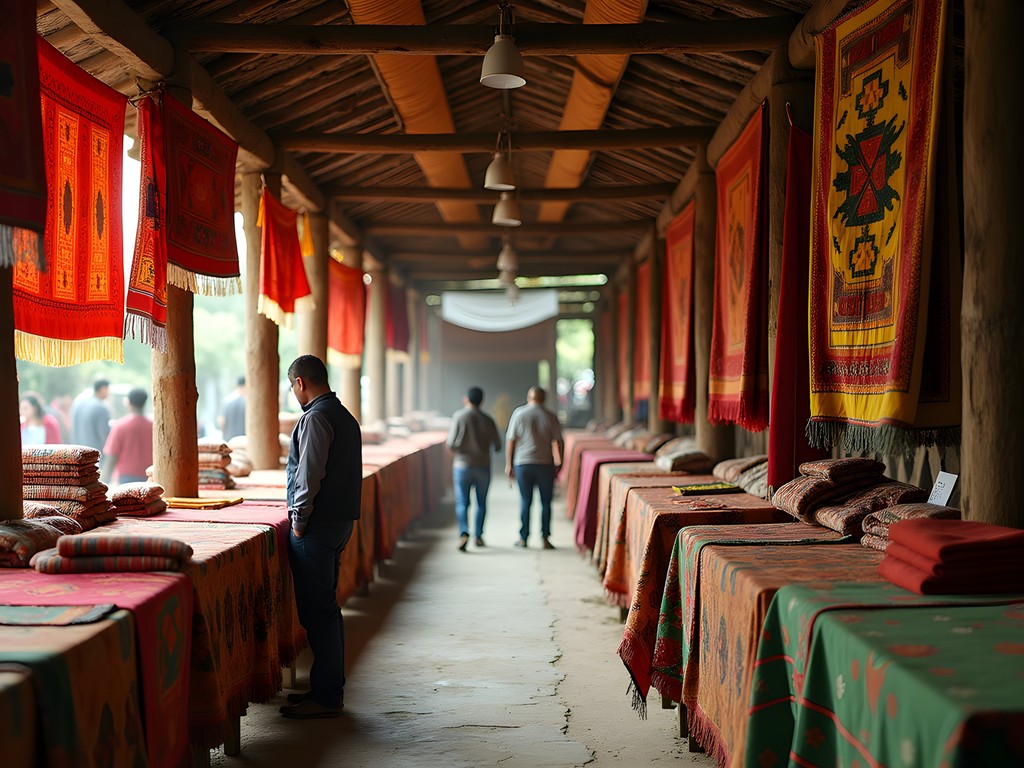
💡 Pro Tips
- Visit the market early (6-8am) when locals shop and the selection is freshest
- Learn basic Malagasy phrases like 'Ohatrinona?' (How much?) and 'Misaotra' (Thank you) to connect with vendors
- Bring smaller bills (ariary) as change can be scarce
Medicinal Craft: The Intersection of Art and Traditional Healing
My professional interest in dermatology has always led me toward understanding how different cultures approach skin health, and Madagascar offers a particularly fascinating case study. At the Bazary Be (Big Market) in Antsiranana, I encountered an entire section dedicated to traditional remedies and the tools used to prepare them.
Raffia baskets woven so tightly they can hold water contain carefully measured portions of medicinal plants—many used for skin conditions that I recognize from scientific literature. The basket-weaving technique itself is remarkable; craftswomen use varying densities to create containers specifically designed for different herbs, with some loose-weave designs for plants that need air circulation and water-tight weaves for volatile oils.
One particularly compelling discovery was the carved wooden combs treated with endemic plant oils. According to local healers, these combs—when used regularly—help distribute natural oils through the hair and scalp, preventing the dryness and subsequent dermatitis common in the region's variable climate. The science actually supports this practice: the even distribution of sebum from scalp to hair shaft can indeed protect both hair and skin from environmental damage.
For those interested in ethnobotany, I highly recommend documenting your findings with a quality digital voice recorder. I've found recording conversations with artisans (with permission, of course) preserves nuances in explanations about traditional uses that might be missed in written notes alone.

💡 Pro Tips
- Always ask permission before photographing medicinal items or practitioners
- Consider purchasing a field guide to Malagasy plants to identify medicinal species
- Some remedies may contain potent bioactive compounds—research before personal use
The Amber Coast's Golden Treasures
The stretch of coastline extending from Antsiranana toward Amber Mountain National Park is locally known as the Amber Coast—a name that references both the golden hues of its beaches and the semi-precious stone found in the region. This area hosts specialized craftspeople who create jewelry incorporating amber, often set in silver or locally sourced metals.
What makes these pieces particularly interesting from a scientific perspective is the amber itself. Madagascar's amber deposits contain some of the most diverse fossil inclusions in the world, occasionally preserving extinct flora and fauna in remarkable detail. While museum-quality specimens are strictly regulated for export, artisans create beautiful jewelry from amber pieces without significant inclusions.
During my visit, I met a third-generation amber craftsman named Jean-Claude who operates a small workshop near Ramena Beach. His techniques blend traditional methods with modern tools, resulting in pieces that honor Malagasy design traditions while appealing to contemporary tastes. The workshop itself was worth the visit—the late afternoon light filtering through amber pieces created an almost ethereal atmosphere as Jean-Claude explained how certain amber hues were traditionally associated with specific healing properties.
For photography enthusiasts attempting to capture the unique translucence of amber crafts, I found my clip-on macro lens invaluable for documenting the fine details without carrying bulky equipment. The coastal light provides excellent natural illumination for photographing these golden treasures.
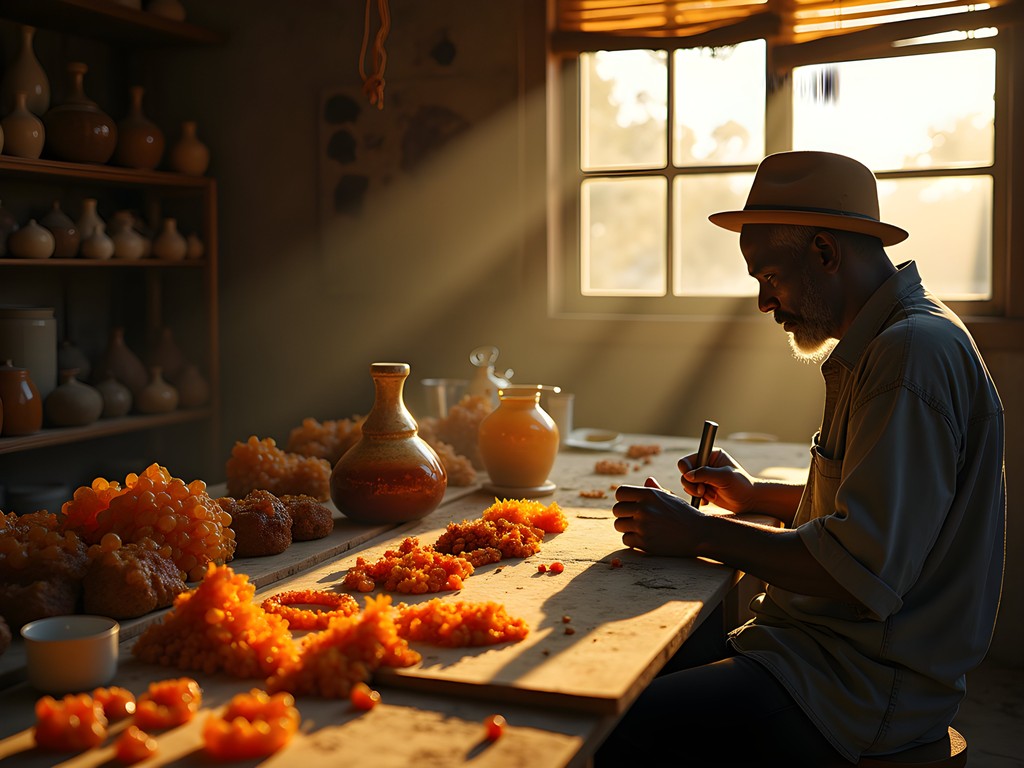
💡 Pro Tips
- Request certificates of authenticity when purchasing amber to ensure it's genuine Madagascar amber
- Visit workshops in the afternoon when artisans are less busy with production
- Amber with insect inclusions commands higher prices but requires export permits
Nosy Be: Ylang-Ylang and Aromatic Treasures
The island of Nosy Be—known as the 'Perfume Island'—offers a sensory shopping experience unlike anywhere else in Madagascar. The island's microclimate supports the cultivation of ylang-ylang, vanilla, and various aromatic plants that form the foundation of a vibrant essential oil craft industry.
Hell-Ville's market (despite its ominous name, a charming colonial-era port town) hosts numerous stalls selling handcrafted products incorporating these botanicals. As a dermatologist, I found the traditional perfumery practices particularly fascinating—many of the extraction and blending techniques have remained unchanged for generations, producing oils with different therapeutic properties than their industrially processed counterparts.
The craftsmanship extends beyond the oils themselves to their containers. Artisans create exquisite vessels from recycled glass, local woods, and even coconut shells lined with beeswax. These containers aren't merely functional—they're designed to properly preserve the volatile compounds in the oils while showcasing Madagascar's artistic traditions.
One standout experience was visiting a women's cooperative in the village of Dzamandzar, where members produce hand-woven baskets specifically designed for storing and transporting aromatic products. These baskets incorporate ylang-ylang fibers that impart a subtle fragrance, creating a harmonious relationship between container and content. The cooperative's approach represents an important economic opportunity for local women while preserving traditional craft knowledge.
For those planning extended exploration of Nosy Be's craft villages, I recommend a reliable dry bag to protect purchases from unexpected rain showers and humid conditions, particularly important for paper products and textiles.
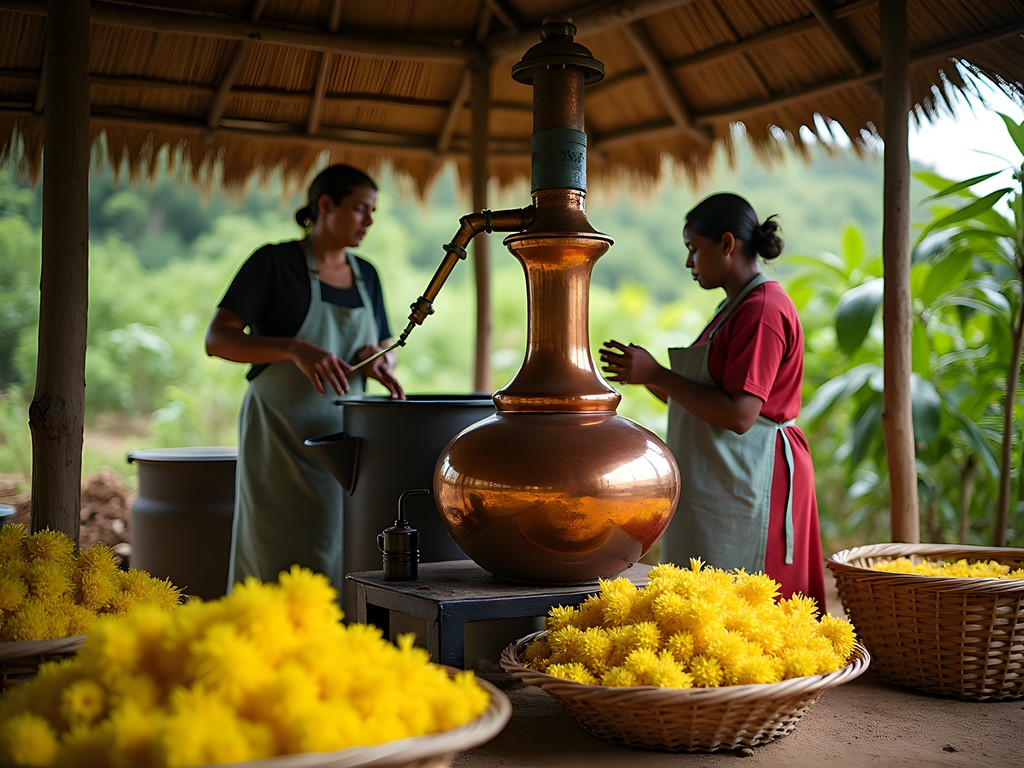
💡 Pro Tips
- Purchase essential oils in dark glass bottles to preserve their therapeutic properties
- Visit the Lemuria Land distillery to understand traditional extraction processes
- Support women's cooperatives for sustainable economic impact
Navigating Authenticity and Sustainability
Shopping for authentic crafts in Northern Madagascar requires balancing appreciation for traditional artisanry with awareness of conservation concerns. Madagascar's unique biodiversity—over 90% of its wildlife exists nowhere else on Earth—has made certain materials highly regulated or outright prohibited for export.
Rosewood (locally called 'bois de rose') presents a particular ethical challenge. This slow-growing hardwood has been harvested to near extinction, yet continues to appear in tourist markets. While older pieces may be legally sold, new rosewood products often indicate illegal harvesting. Instead, look for alternatives like mango wood, which offers similar workability but comes from sustainable plantation sources.
Similarly, products incorporating wildlife parts require careful consideration. While some traditional items may include materials from non-endangered species harvested sustainably, others may contribute to conservation threats. I've found that reputable vendors are typically transparent about their materials' sources and can provide documentation for regulated items.
The most reliable approach to ethical shopping is seeking artisans who embrace sustainable innovations while honoring traditional techniques. In Antsiranana, I discovered a collective creating stunning jewelry using recycled glass and sustainably harvested seeds, finished with traditional plant-based dyes. Their work demonstrates how Malagasy craft traditions can evolve to address contemporary environmental concerns without losing cultural authenticity.
For documenting provenance and keeping track of purchases, I rely on my travel journal to record details about artisans, materials, and traditional significance—information that enriches my understanding of these pieces long after returning home.
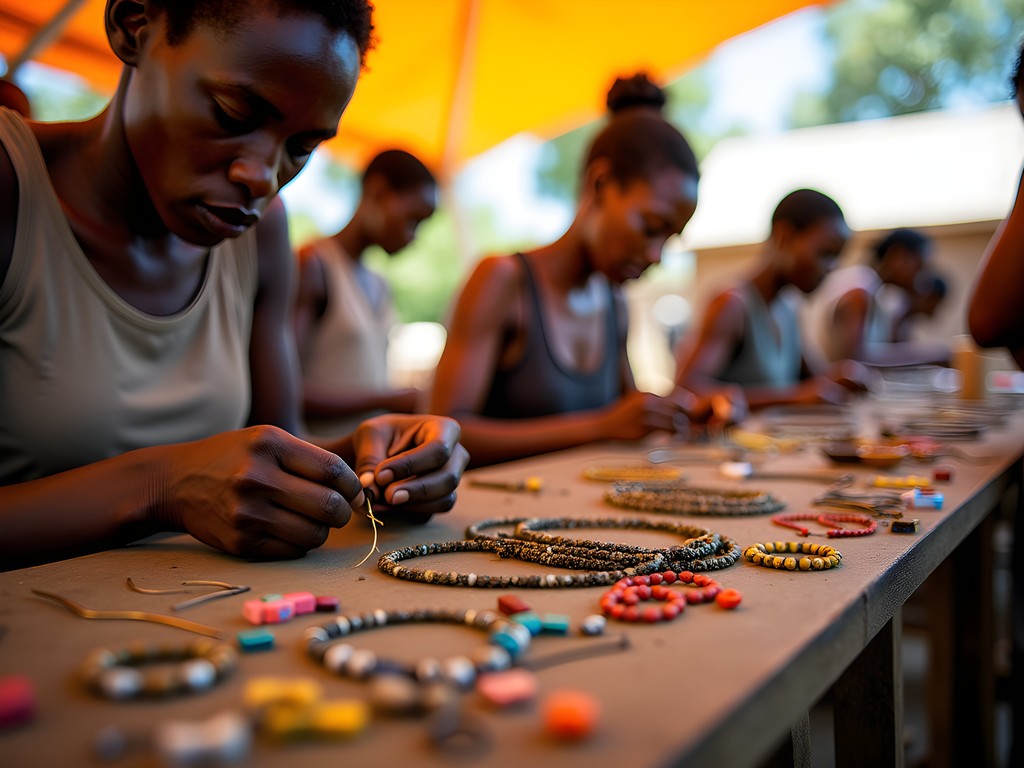
💡 Pro Tips
- Ask about materials—responsible vendors willingly disclose their sources
- Look for cooperatives and workshops that explicitly practice sustainable harvesting
- Consider weight limitations for your return flight when purchasing heavier wooden items
Final Thoughts
The craft traditions of Northern Madagascar offer more than beautiful souvenirs—they provide a tangible connection to the island's unique ecological and cultural heritage. As climate patterns shift and global markets evolve, these artisanal practices face both challenges and opportunities for adaptation. My training as a dermatologist has taught me that skin—our largest organ—tells stories of environmental interaction and adaptation. Similarly, Madagascar's crafts narrate a complex relationship between people, place, and natural resources. By supporting artisans who balance tradition with sustainability, visitors participate in preserving these living cultural expressions while bringing home treasures that carry authentic stories of this remarkable island. Whether you're drawn to the aromatic oils of Nosy Be or the intricate woodcarvings of Antsiranana, approach your shopping as both an anthropological exploration and a chance to support communities maintaining irreplaceable knowledge systems.
✨ Key Takeaways
- Shop early in the morning at markets for the best selection and authentic local experience
- Learn about sustainable alternatives to endangered materials like rosewood
- Support women's cooperatives and community workshops for maximum positive impact
- Document the stories behind your purchases to preserve their cultural context
📋 Practical Information
Best Time to Visit
April-June (late spring)
Budget Estimate
$50-100 per day excluding accommodations
Recommended Duration
7-10 days
Difficulty Level
Moderate
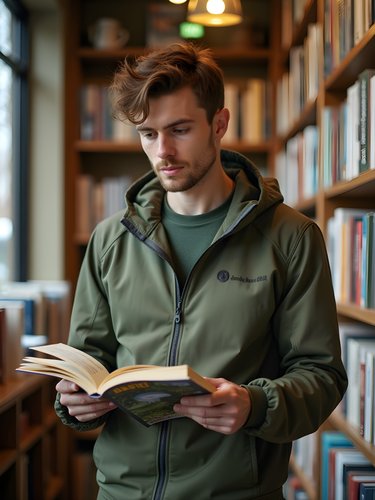
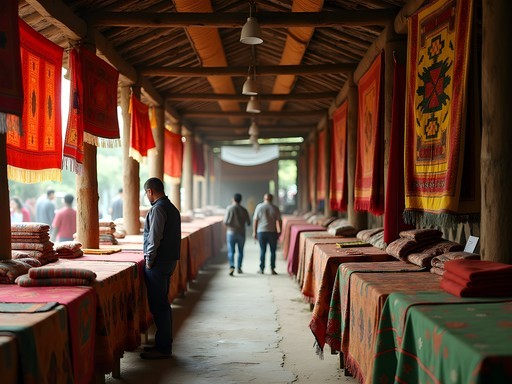
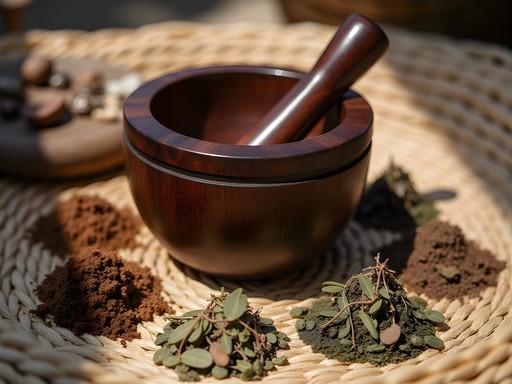
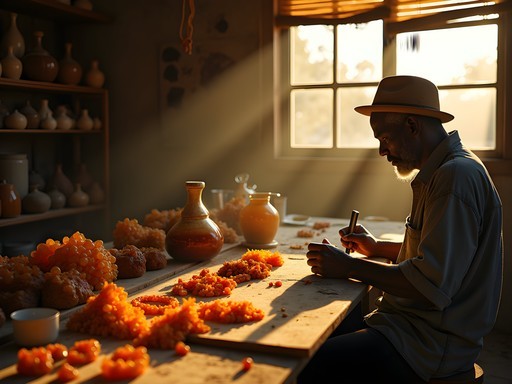
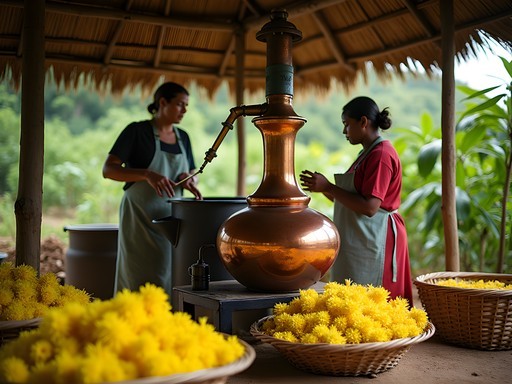
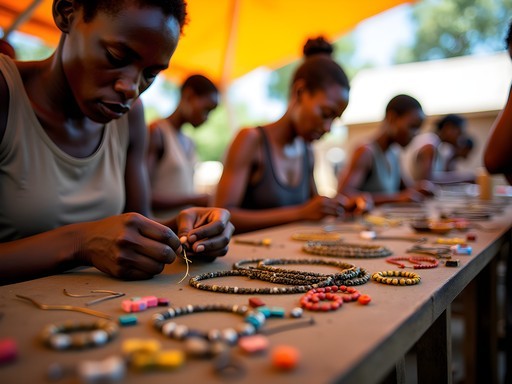





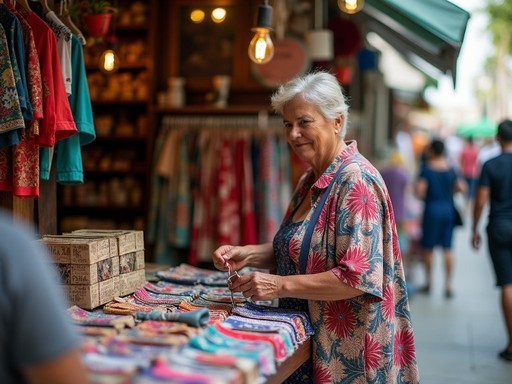
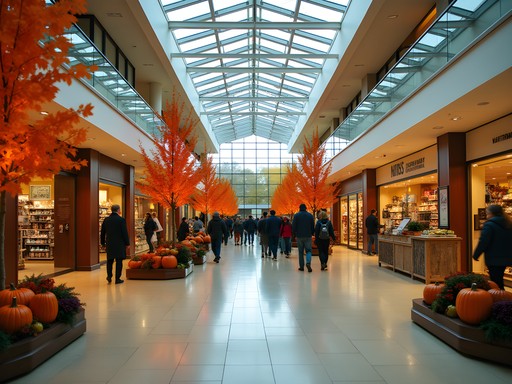

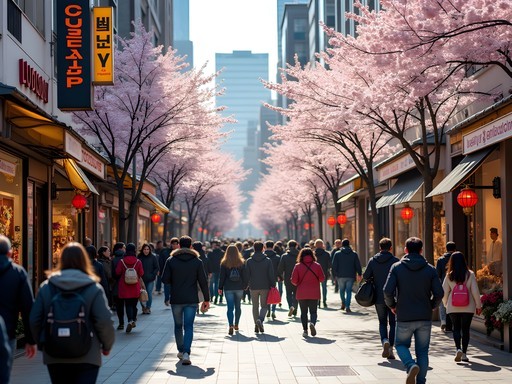
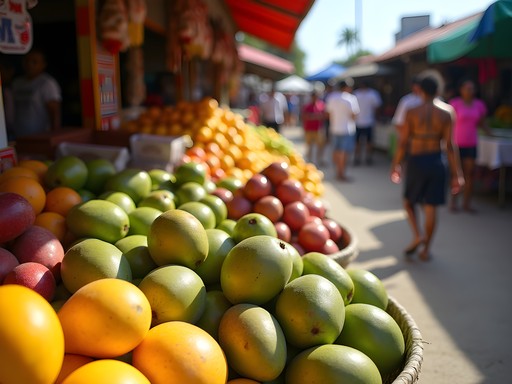
Comments
moonmood
Those market photos are stunning! 😍
Amit Sullivan
Wonderful post that captures the soul of Madagascar's craft traditions! One tip I'd add from my visits to Antsiranana: the markets are much less crowded in the early morning (6-8am). Not only is the light beautiful for photos, but the artisans have more time to explain their craft processes. I've found some of my most treasured pieces this way - including a stunning raffia textile that took the weaver three months to complete. The colors and patterns tell stories about local mythology that you'd never understand without that personal explanation. Brandon's point about the intersection of art and healing is spot on - these aren't just souvenirs but windows into a complex cultural tradition.
Savannah Walker
I spent three weeks in Northern Madagascar last year and the craft markets were the highlight! In Antsiranana, I found this elderly artisan who'd been carving zebu horn combs for 60+ years. His hands were like weathered maps, telling stories of decades of craftsmanship. He showed me how each piece takes days to complete. I use my travel journal to sketch the designs I saw there - they've inspired so much of my own art since then. Brandon, your section about the Amber Coast brought back so many memories - that golden light hitting the amber pieces is something photos can never fully capture!
moonmood
That sounds incredible! Did you have any issues with customs bringing crafts back home?
Savannah Walker
None at all with the crafts! Just make sure wood items are properly treated and declared. The only thing to watch for is anything that might contain protected species - obviously avoid those entirely.
wanderlustbackpacker
OMG the ylang-ylang products from Nosy Be are LIFE-CHANGING!!! I bought some oil there last year and I'm still using it. The scent takes me right back to those beaches every time! 🌺🏝️
greenbuddy
Great post! How much should I expect to spend on those medicinal crafts? Planning a trip in December and want to budget accordingly.
Brandon Carroll
Thanks for asking! Small medicinal craft items start around 5-10 euros, but the more elaborate pieces with rare woods or intricate carvings can go up to 50-60 euros. Bargaining is expected but keep it respectful!
greenbuddy
Perfect, thanks for the info! That's more affordable than I expected.
bluerider
Those amber pieces look amazing! Definitely adding this to my bucket list.
TravelingTeacher
Just returned from northern Madagascar last week. If you're interested in the medicinal crafts mentioned in the article, visit the small workshop in Joffreville (about 40 min from Antsiranana). The herbalist there showed us how they make the traditional remedies and even demonstrated some techniques. Much more authentic than what you find in the tourist markets!
Hunter Thompson
That's a brilliant tip! I missed Joffreville on my trip. Adding it to my list for next time.
smartexplorer
Thanks for the bargaining tips! Can't wait for my trip next month.
IslandHopper42
Those market photos are stunning! Making me want to book a flight right now!
moonnomad
Anyone bought those amber jewelry pieces? I'm curious about quality and pricing. Planning a trip for December and wondering if they're worth the splurge.
Taylor Moreau
@moonnomad I purchased a lovely amber necklace for about €65 after negotiation. The quality varies widely, so look for pieces with good clarity and natural inclusions - those are signs of authenticity. The amber from Madagascar has a distinctive warm reddish hue that's quite beautiful.
Venture X
Premium card with 2X miles, $300 travel credit, Priority Pass